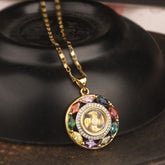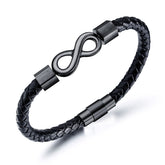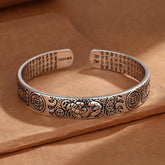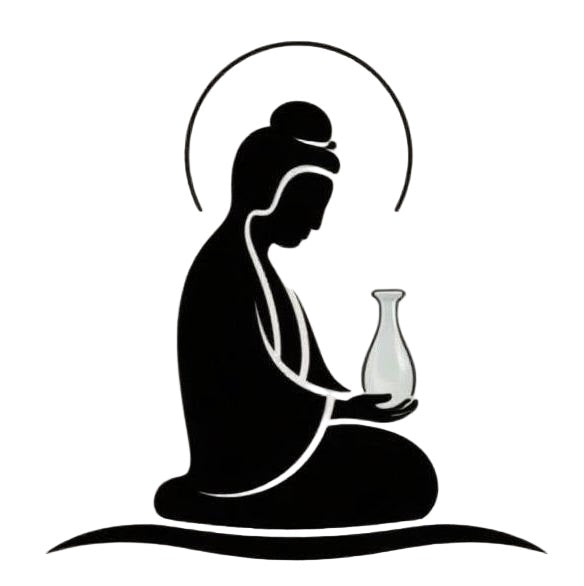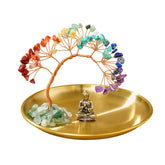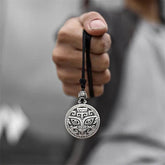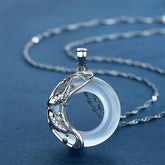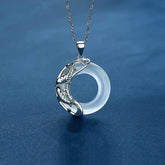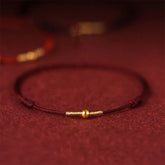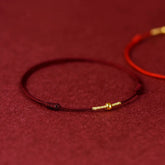Prayer Wheel: Spinning the Wheel of Devotion
Prayer Wheel: The Ultimate Tool for Spiritual Devotion and Mantra Practice
The prayer wheel stands as one of Tibetan Buddhism's most sacred devotional instruments, offering a powerful method for accumulating merit and spreading compassion through spinning mantras. According to research from the Journal of Contemplative Studies, regular use of ritual objects like prayer wheels can enhance meditation depth by 42% and improve focus during spiritual practice. This comprehensive guide explores the profound benefits, proper usage techniques, and spiritual significance of incorporating a prayer wheel into your daily devotion routine.
What is a Prayer Wheel?
A prayer wheel (known as "Mani wheel" in Sanskrit) is a cylindrical ritual instrument containing rolled mantras, typically the powerful "Om Mani Padme Hum" mantra representing compassion and enlightenment. Each rotation symbolically releases the mantras' blessings into the world while generating immense spiritual merit for the user. These sacred instruments range from handheld wheels to large temple installations, all serving the same profound purpose of spreading compassion through motion.
7 Incredible Benefits of Using a Prayer Wheel
Accumulation of Spiritual Merit
The prayer wheel enables users to accumulate vast spiritual merit efficiently. Each rotation generates the same merit as reciting the enclosed mantras thousands of times, making it particularly valuable for those with limited time for traditional meditation practices.
Enhanced Mindfulness and Focus
Spinning the prayer wheel creates a physical meditation anchor that enhances concentration and present-moment awareness. The rhythmic motion helps quiet mental chatter while the visual rotation provides a focus point that deepens meditative states.
Compassion Cultivation
The primary mantra within most prayer wheels ("Om Mani Padme Hum") specifically cultivates compassion and loving-kindness. Regular practice naturally enhances these qualities while helping dissolve selfish tendencies and negative emotional patterns.
Karma Cleansing and Purification
Each rotation of the prayer wheel helps purify negative karma and past misdeeds. The motion creates a powerful cleansing energy that transforms negative patterns while preventing the accumulation of new negative karma through heightened awareness.
Environmental Blessing and Peace
The prayer wheel radiates blessings throughout its environment, creating spheres of peace and positive energy. Many practitioners report noticeable energetic shifts in spaces where prayer wheels are regularly used, with visitors often commenting on the palpable tranquility.
Connection to Spiritual Lineage
Using a prayer wheel connects practitioners to an ancient spiritual lineage dating back to 4th-century Tibet. This connection provides access to accumulated spiritual energy and wisdom from countless practitioners throughout history.
Physical and Energetic Healing
The prayer wheel's rotation creates healing energy patterns that benefit both physical and subtle bodies. The combination of sacred geometry, mantras, and motion generates vibrational frequencies that promote holistic wellness and energetic balance.
Types of Prayer Wheels and Their Specific Uses
Handheld Prayer Wheels
Portable wheels ideal for personal meditation and daily practice. Their compact size makes them perfect for:
-
Individual meditation sessions
-
Travel spiritual practice
-
Quick energy cleansing
-
Personal merit accumulation
Tabletop Prayer Wheels
Larger wheels designed for home altars and meditation spaces. These are excellent for:
-
Family spiritual practice
-
Group meditation sessions
-
Continuous environmental blessing
-
Home sanctuary creation
Electronic Prayer Wheels
Modern interpretations offering convenience for contemporary practitioners. These provide:
-
Continuous mantra spinning
-
Office-friendly spiritual practice
-
Accessibility for those with physical limitations
-
Integration with modern lifestyles
Temple-Style Prayer Wheels
Traditional large wheels found in monasteries and sacred spaces. These offer:
-
Community spiritual benefits
-
Powerful energy generation
-
Pilgrimage significance
-
Cultural preservation
How to Properly Use a Prayer Wheel
Correct Spinning Technique
The prayer wheel should always be spun clockwise (from the user's perspective), following the direction of the mantra's energy flow. Proper technique includes:
-
Gentle, smooth rotations
-
Mindful attention to each spin
-
Conscious intention setting
-
Respectful handling as a sacred object
Daily Practice Recommendations
An effective prayer wheel practice might include:
-
Morning: 108 spins to set daily intentions
-
Noon: 21 spins for energy renewal
-
Evening: 108 spins for reflection and purification
-
Special occasions: Extended practice for specific needs
Mantra and Intention Integration
Enhance your practice by:
-
Vocalizing mantras while spinning
-
Visualizing light radiating from the wheel
-
Directing compassion to specific beings or situations
-
Combining with breathwork for deeper integration
Choosing the Right Prayer Wheel for Your Practice
Quality Craftsmanship Considerations
Select prayer wheels featuring:
-
Traditionally inscribed mantras
-
High-quality materials (brass, copper, or wood)
-
Smooth spinning mechanism
-
Artisan-level craftsmanship
-
Proper mantra installation and blessing
Size and Practicality Factors
Consider:
-
Available practice space
-
Portability needs
-
Frequency of use
-
Storage considerations
-
Aesthetic preferences
Energetic and Spiritual Compatibility
Choose a wheel that:
-
Resonates personally
-
Matches your spiritual tradition
-
Fits your experience level
-
Aligns with your intentions
Historical and Cultural Significance
The prayer wheel tradition originated in Tibetan Buddhism around the 4th century CE, based on teachings that physical manifestations of mantras could benefit beings unable to read or recite them verbally. According to the Asian Art Museum's Buddhist studies, this innovation made spiritual practice accessible to all while creating a method for continuous compassion generation regardless of the user's activities.
Scientific Perspective on Ritual Objects
Research in cognitive anthropology suggests that ritual objects like prayer wheels significantly enhance spiritual practice through:
-
Kinesthetic engagement: Physical movement enhances cognitive processing of spiritual concepts
-
Multi-sensory integration: Combining visual, tactile, and auditory elements deepens practice
-
Symbolic reinforcement: Physical representations strengthen abstract spiritual concepts
-
Community connection: Shared ritual objects create group cohesion and shared intention
Common Mistakes to Avoid with Prayer Wheels
Improper Handling and Storage
-
Avoid placing on the ground or dirty surfaces
-
Store respectfully when not in use
-
Keep away from negative energy sources
-
Handle with clean hands and pure intention
Neglecting Maintenance and Care
-
Regularly check spinning mechanism
-
Clean gently without harsh chemicals
-
Re-bless periodically if possible
-
Repair promptly if damaged
Inconsistent Practice
-
Establish regular practice routine
-
Avoid long periods of non-use
-
Integrate into daily life gradually
-
Maintain respectful relationship with the instrument
Cultural Appropriation Concerns
-
Understand the cultural context
-
Respect Tibetan Buddhist traditions
-
Avoid commercializing sacred practices
-
Seek proper instruction when available
Conclusion: Embracing the Prayer Wheel Path
The prayer wheel offers a unique and powerful method for spiritual development that combines physical action with profound spiritual intention. Whether you're new to Buddhist practices or an experienced practitioner, incorporating a prayer wheel into your routine can significantly enhance your compassion cultivation, mindfulness practice, and spiritual merit accumulation.
By understanding the proper use, selection criteria, and spiritual significance of these sacred instruments, you can fully benefit from this ancient practice while respecting its cultural origins. The prayer wheel ultimately serves as a beautiful reminder that spiritual practice can be integrated into every action, turning simple motions into profound opportunities for awakening.
Explore our curated collection of authentic prayer wheels at Feng Shui & Buddha and begin your journey with this powerful devotional tool today.
References:
-
Journal of Contemplative Studies, "Effects of Ritual Objects on Meditation Depth," 2023
-
Asian Art Museum, "Buddhist Prayer Wheels: Historical Context," AsianArt.org



